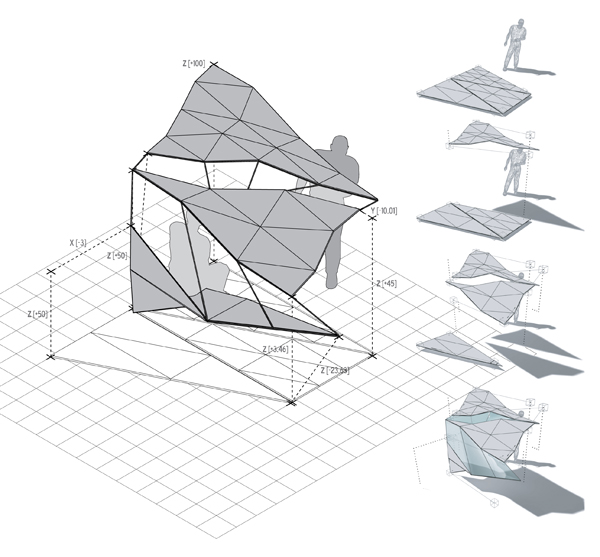Kinematic Pavilion for Transient Passengers

This was a exploration in embedded Inverse Kinematic systems. Each plywood panel has a IK system with 3 nodes embedded into it's surface, so that as each node of the bone structure moves, the panels begin to change into various facetted forms. I then rigged each node's X, Y, and Z values up to sliders in 3D Max so that I could specifically calibrate each node's movement and be able to track that through time. The animation frames on the right show a few still images of the process of erecting this small pavilion that would be utilized by transient passengers.
Nodal Networks




Starting with medical tube diagrams, a organizational model was created by the process of applying pins or constraints to a network. Accupuncture became a theoretical model, utilizing local pressure points to create maximum effects on the structure. Eventually, nodal networks were developed at both the macro scale (the urban scale) and the micro scale (a structural pavilion prototype) to create a series of programmatic follies at Columbus Circle in New York City.
![[LIFT] architects](/storage/layout/Header_025.png)